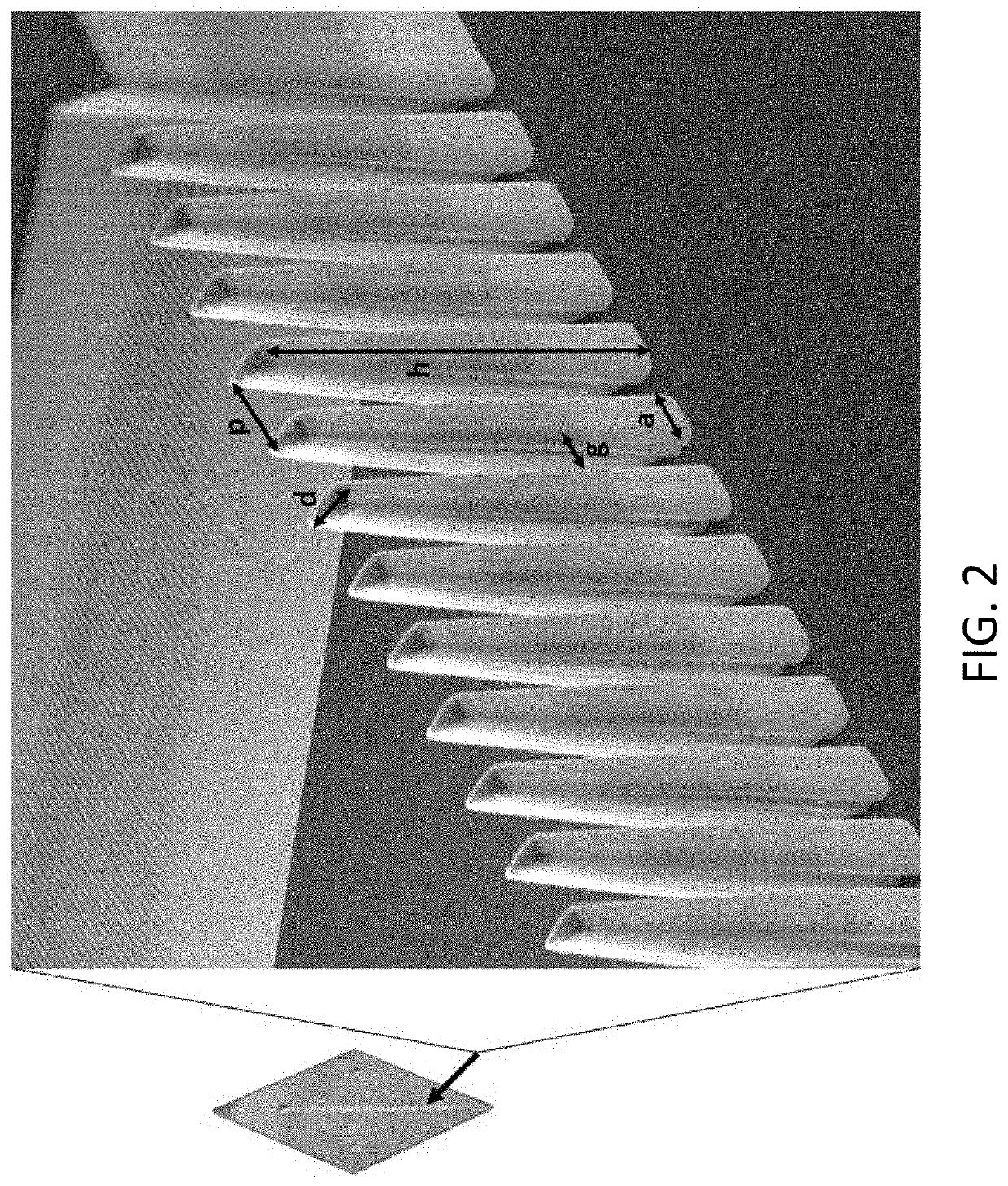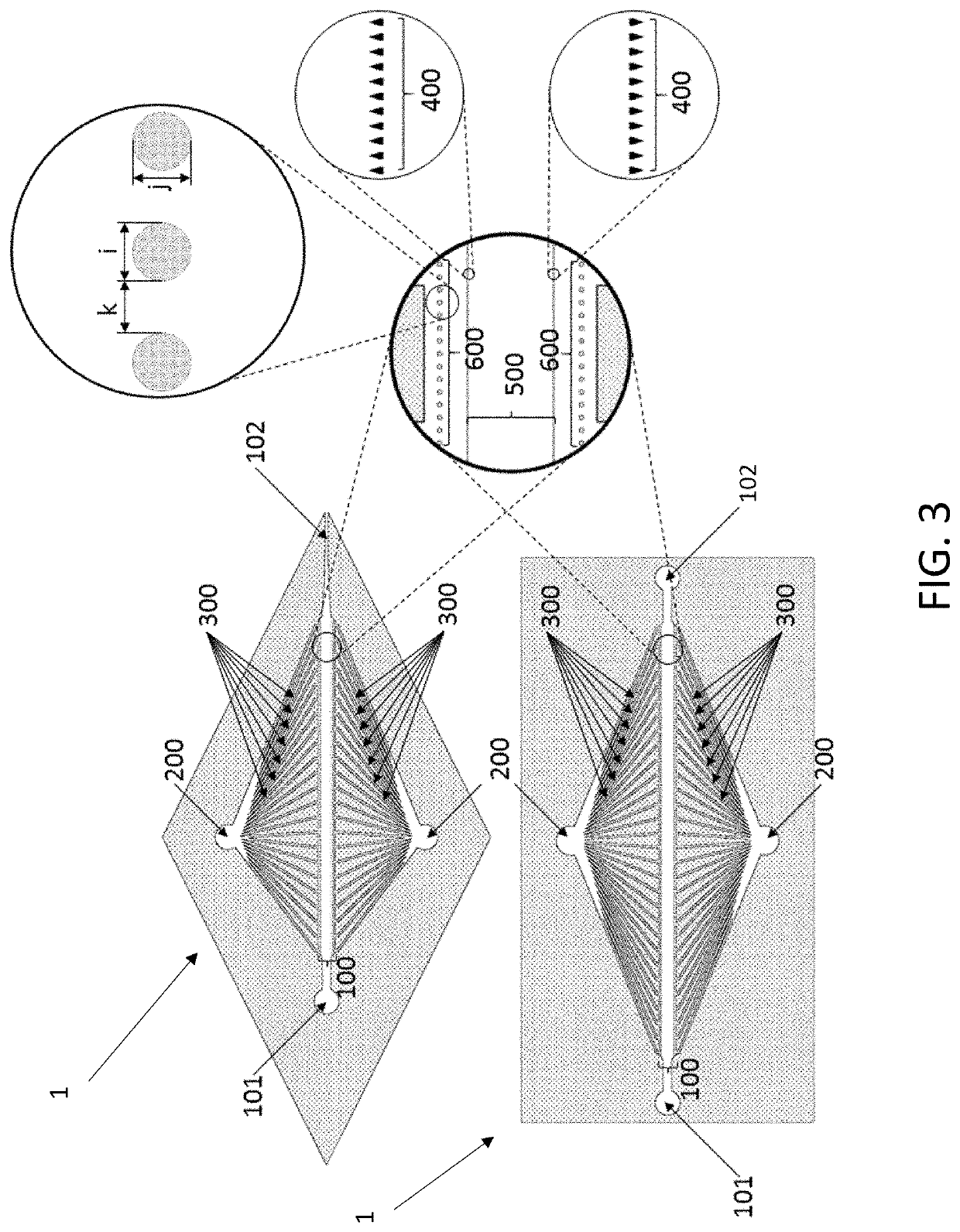Micro-Fluidic Particle Concentrator and Filtering Device
a technology of microfluidic particles and filtering devices, which is applied in the field of microfluidics and microfluidic devices, can solve the problems of mass cell loss in dead volume, difficult manipulation of solutions containing high cell densities, and still lacking critical functions essential to mimic the anatomy of organs
- Summary
- Abstract
- Description
- Claims
- Application Information
AI Technical Summary
Benefits of technology
Problems solved by technology
Method used
Image
Examples
Embodiment Construction
[0042]The present disclosure may be more readily understood by reference to the following detailed description presented in connection with the accompanying figures, which form a part of this disclosure. It is to be understood that this disclosure is not limited to the specific conditions or parameters described and / or shown herein, and that the terminology used herein is for the purpose of describing particular embodiments by way of example only and is not intended to be limiting of the claimed disclosure.
[0043]As used herein and in the appended claims, the singular forms “a”, “an” and “the” include plural referents unless the context clearly dictates otherwise. Also, the use of “or” means “and / or” unless stated otherwise. Similarly, “comprise”, “comprises”, “comprising”, “include”, “includes” and “including” are interchangeable and not intended to be limiting. It is to be further understood that where descriptions of various embodiments use the term “comprising”, those skilled in ...
PUM
| Property | Measurement | Unit |
|---|---|---|
| pressure | aaaaa | aaaaa |
| height | aaaaa | aaaaa |
| aspect ratio | aaaaa | aaaaa |
Abstract
Description
Claims
Application Information
 Login to View More
Login to View More - R&D
- Intellectual Property
- Life Sciences
- Materials
- Tech Scout
- Unparalleled Data Quality
- Higher Quality Content
- 60% Fewer Hallucinations
Browse by: Latest US Patents, China's latest patents, Technical Efficacy Thesaurus, Application Domain, Technology Topic, Popular Technical Reports.
© 2025 PatSnap. All rights reserved.Legal|Privacy policy|Modern Slavery Act Transparency Statement|Sitemap|About US| Contact US: help@patsnap.com



